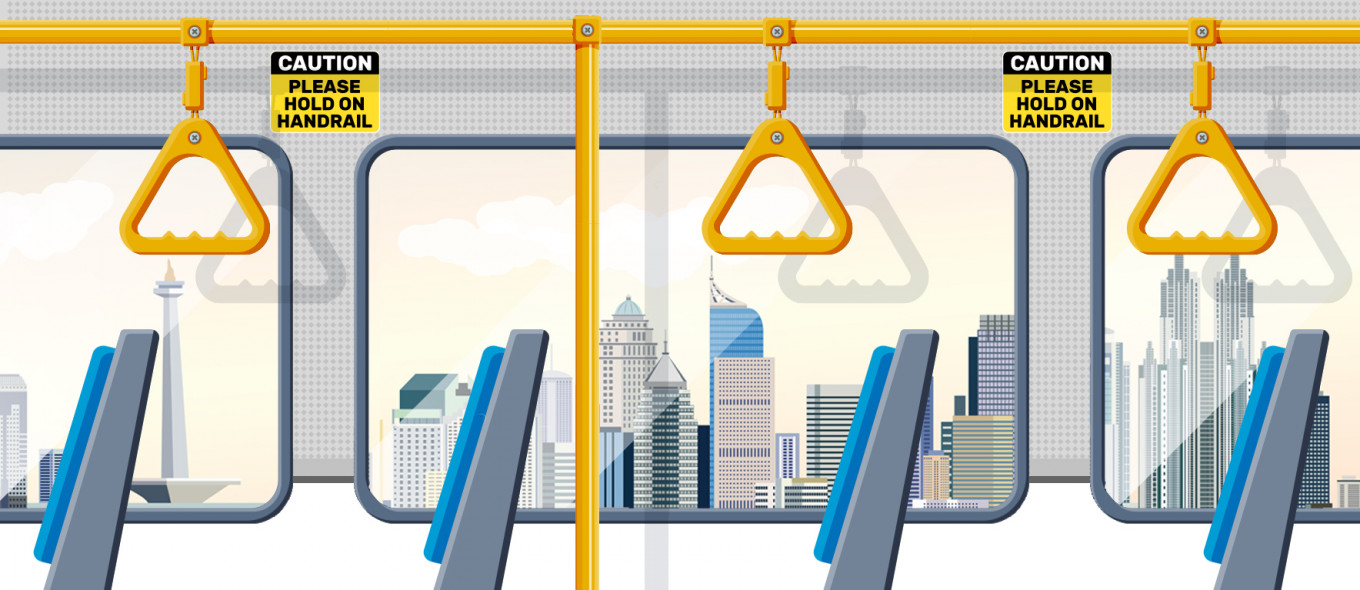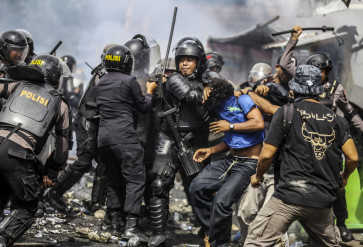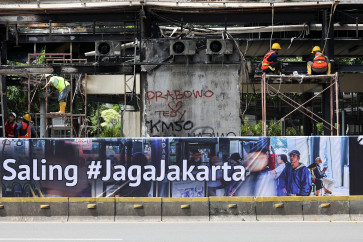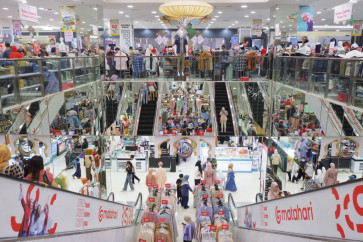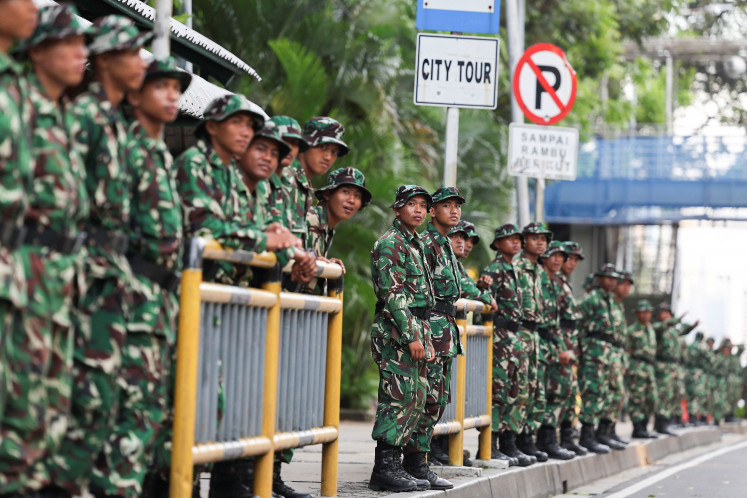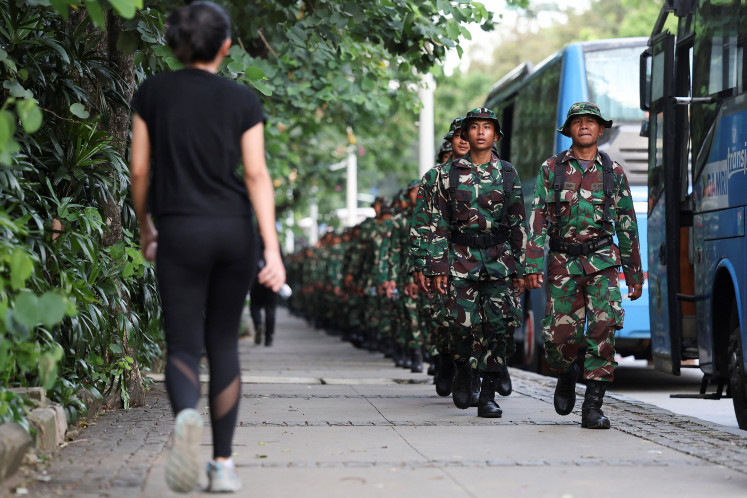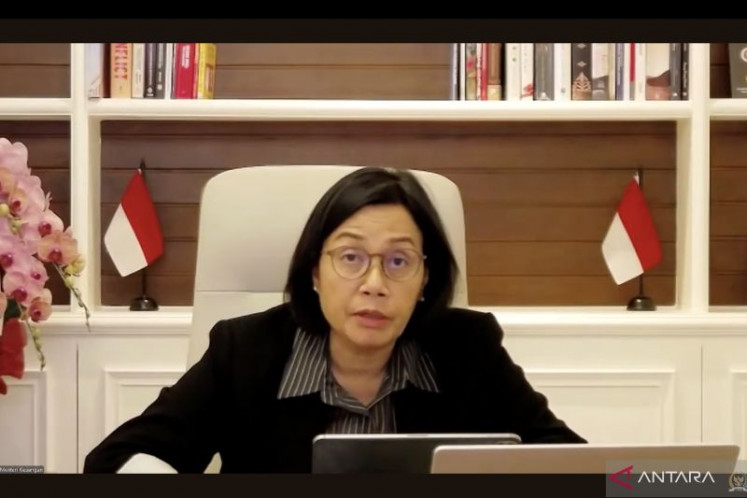Popular Reads
Top Results
Can't find what you're looking for?
View all search resultsPopular Reads
Top Results
Can't find what you're looking for?
View all search resultsThe bus: The hero of public transportation
When choosing a rapid transit system for a city, it should consider several factors: Cost, performance, implementation speed, scalability and local preferences.
Change text size
Gift Premium Articles
to Anyone
Work It Right is a weekly column that provides practical and insightful advice on the complexities of urban transportation.
Things about a bus that I like, which I just realized recently, are about letting us see the city with a level-view parallel to the road, allowing me to see what is happening in the city.
The bus also provides more accessible access, without having to go underground, three floors down or more. It also takes us to the nearest point of our destination because of its flexibility.
Even when going abroad, I prefer to take the bus because it takes me to the local streets, where tourists rarely travel. In Jakarta, the bus is affordable for its citizens.
Here is why.
Bus reformation
TransJakarta was the first bus rapid transit (BRT) to be operated in Indonesia in 2004. The BRT is not a familiar public transport system for Indonesians and probably the rest of the world. You may have heard of mass rapid transit (MRT), light rapid transit (LRT) or heavy rail transit (HRT), which are all rail-based rapid transit systems. So, what about the BRT? As its name suggests, the BRT is a road-based rapid transit and has five essential elements to put the "rapid" in bus rapid transit (BRT Planning Guide):
1. Physically separated bus lanes allow buses to avoid congestion,
2. Stations and bus lanes align to the center of the street to avoid being delayed by turning vehicles or vehicles dropping off passengers or goods,
3. Fares are collected off the bus to avoid delays caused by passengers paying during the on and off boarding process,
4. Boarding is done from a platform level with the bus floor to make boarding faster, and for people in wheelchairs or with strollers to roll directly onto the vehicle; and
5. Turning restrictions and bus priority signals at the intersections reduce any delay at intersections from traffic lights.
But why the BRT?
When choosing a rapid transit system for a city, it should consider several factors: Cost, performance, implementation speed, scalability and local preferences.
Cost is crucial, even for a city with a big regional revenues and expenditures budget (APBD), to benefit most from the investment. Therefore, the rapid transit's economic and social advantages must be compared with other investments.
The system's flexibility also matters, especially in cities in Indonesia with urban planning that does not accommodate public transportation. For example, some modes of transportation are easy to build in small segments, while other modes make more financial sense to be built in larger segments.
The BRT also allows the expansion of existing modes, as services and infrastructure can be connected more seamlessly.
Mainstay for the vulnerable
TransJakarta, with its 13 corridors, direct service routes and flexibility to integrate with other modes (Jak Lingko), has served almost 90 percent of Jakarta's network coverage.
And now it is on its way to reaching 1 million passengers per day after the COVID-19 pandemic. Even so, TransJakarta still has a lot of work to do.
The TransJakarta lane is not sterile; the access somehow becomes troublesome for passengers because of the long and winding pedestrian bridge. Nevertheless, TransJakarta, with its low fare, is a mainstay of citizens in terms of mobility, especially for those who are economically vulnerable.
But then, is the BRT enough for a city? Even with the arrival of the MRT and LRT as well as the reforms of the commuter train (KRL), two major issues in Greater Jakarta remain unresolved: congestion and air pollution.
Regardless of which mode of public transportation is chosen for the city, policies that encourage the reduced use of private motorized vehicles are the key. Why? Well, that’s a topic for another article. Stay tuned!
-- Have a question about urban transportation? Send it to wir@thejakartapost.com with your name and current location (anonymous submissions may also be considered). Please note that The Jakarta Post reserves the right to edit your letters for publication
***
The writer is a senior communications and partnership manager at the Institute for Transportation and Development Policy (ITDP).

